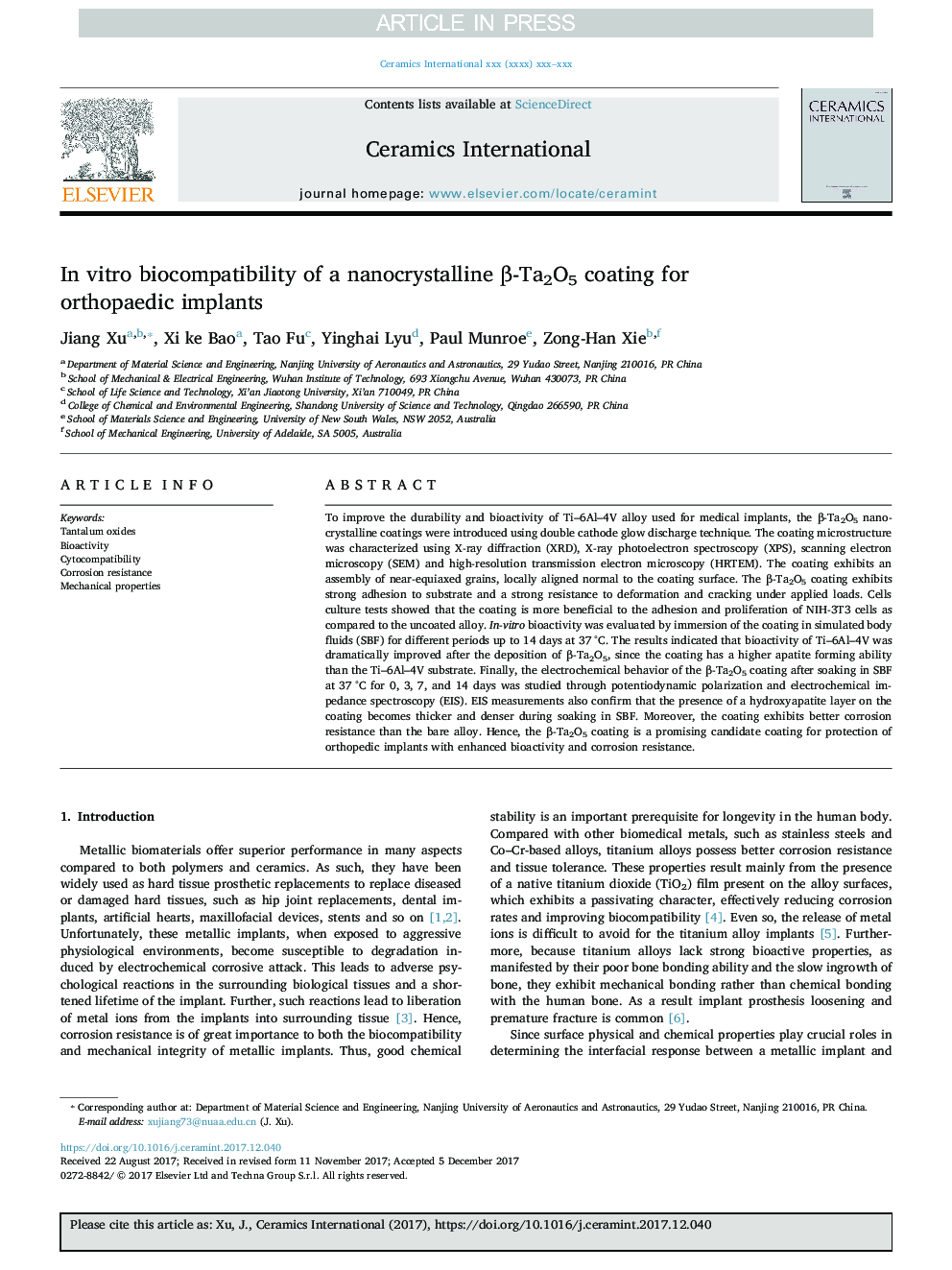| Article ID | Journal | Published Year | Pages | File Type |
|---|---|---|---|---|
| 7888006 | Ceramics International | 2018 | 16 Pages |
Abstract
To improve the durability and bioactivity of Ti-6Al-4V alloy used for medical implants, the β-Ta2O5 nano-crystalline coatings were introduced using double cathode glow discharge technique. The coating microstructure was characterized using X-ray diffraction (XRD), X-ray photoelectron spectroscopy (XPS), scanning electron microscopy (SEM) and high-resolution transmission electron microscopy (HRTEM). The coating exhibits an assembly of near-equiaxed grains, locally aligned normal to the coating surface. The β-Ta2O5 coating exhibits strong adhesion to substrate and a strong resistance to deformation and cracking under applied loads. Cells culture tests showed that the coating is more beneficial to the adhesion and proliferation of NIH-3T3 cells as compared to the uncoated alloy. In-vitro bioactivity was evaluated by immersion of the coating in simulated body fluids (SBF) for different periods up to 14 days at 37 °C. The results indicated that bioactivity of Ti-6Al-4V was dramatically improved after the deposition of β-Ta2O5, since the coating has a higher apatite forming ability than the Ti-6Al-4V substrate. Finally, the electrochemical behavior of the β-Ta2O5 coating after soaking in SBF at 37 °C for 0, 3, 7, and 14 days was studied through potentiodynamic polarization and electrochemical impedance spectroscopy (EIS). EIS measurements also confirm that the presence of a hydroxyapatite layer on the coating becomes thicker and denser during soaking in SBF. Moreover, the coating exhibits better corrosion resistance than the bare alloy. Hence, the β-Ta2O5 coating is a promising candidate coating for protection of orthopedic implants with enhanced bioactivity and corrosion resistance.
Related Topics
Physical Sciences and Engineering
Materials Science
Ceramics and Composites
Authors
Jiang Xu, Xi ke Bao, Tao Fu, Yinghai Lyu, Paul Munroe, Zong-Han Xie,
